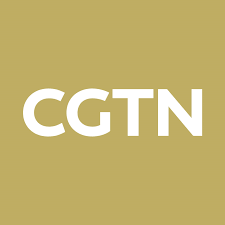public health
Select Media Placements
October 2022
The Lancet (10/1/22) – “Lasker Awards 2022”
September 2022
New York Times (9/28/22) – “Lasker Award Honors Development of Noninvasive Prenatal DNA Test”
JAMA Network (9/28/22) – “The COVID-19 Dashboard for Real-time Tracking of the Pandemic”
July 2022
Nature (7/5/22) – “Need web data? Here’s how to harvest them”
March 2022
Nature (3/23/22) – “Lessons from the COVID data wizards”
September 2021
April 2021
Healthywomen (4/15/21 [online]) – “15 Minutes with Dr. Lauren Gardner”
February 2021
Worth (2/18/21 [online]) – “2021 Groundbreaking Women List”
January 2021
December 2020
Inc. (12/3/20 [online]) – “These 4 Unsung Heroes of the Covid-19 Pandemic Just Might Inspire You”
November 2020
BBC (11/24/20) – “BBC 100 Women 2020”
October 2020
The Baltimore Sun (10/21/20) – “25 Women to Watch 2020”
September 2020
August 2020
July 2020
CNN (7/11/20) – “Johns Hopkins’ dashboard: The people behind the pandemic’s most visited site”
Baltimore Magazine (July 2020) – GameChanger: Lauren Gardner
NBC Nightly News (7/1/20) – “What makes someone a coronavirus super-spreader?”
CNN (7/1/20) – “Americans who stayed home before they were told to saved lives, study finds”
June 2020
Le Monde (6/6/20) – “Johns Hopkins University, vigie mondiale de l’épidémie due au coronavirus”
May 2020
Johns Hopkins Engineering Magazine (Summer 2020) – “Tracking the Coronavirus”
Johns Hopkins University Magazine (Summer 2020) – “Seeing Red”
The Atlantic (5/8/20) – “You’ll Probably Never Know If You Had the Coronavirus in January”
April 2020
NPR (4/13/20) – “Mapping COVID-19: Millions Rely On Online Tracker Of Cases Worldwide”
The New York Times (4/7/20) – “Coronavirus Map: Tracking the Global Outbreak”
Nature Index (4/7/20) – “Behind the Johns Hopkins University coronavirus dashboard”
March 2020
PBS News Hour (3/22/20) – “What trends are researchers seeing with the coronavirus?”
CSPAN (3/6/2020) – Johns Hopkins University Coronavirus Briefing
Women’s Agenda (3/1/20) – “Meet some of the women trying to beat the spread of coronavirus”
February 2020
January 2020
CNN (1/29/20) – “This map tracks the coronavirus in real time”
Vox (1/29/20) – “A coronavirus outbreak is spreading quickly. Here’s what you need to know.”
U.S. News & World Report (1/28/20) – “Tracking the Coronavirus in Real Time”































